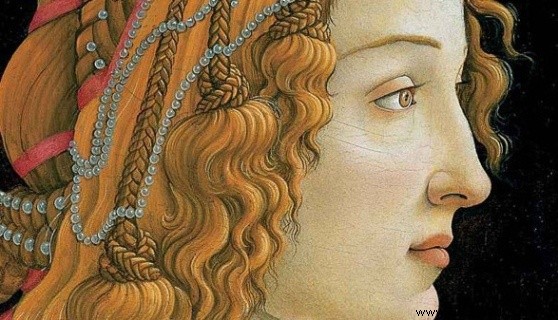
Simonetta Vespucci portrayed by Sandro Botticelli (detail
Simonetta Vespucci , born Cattaneo, (1453-1476) was one of the most beautiful and admired noblewomen of Renaissance Florence.
Almost certainly originally from Genoa, the girl married very young with Marco di Piero Vespucci , a relative of the famous navigator, and with him moved to Florence.
At the time, the Tuscan city, thanks to the enlightened policy of the Medici, lived its heyday and was considered the pulsating center from which emanated the best of European culture ( see https://www.pilloledistoria.it/10854/cinema-tv-spettacolo/i-medici-2-trama-e-cast).
The scant biographical information on Simonetta about her we learn not only from her documents, but above all from the testimonies of the artists who loved and admired her to the point of making her their inspirational muse.
Sandro Botticelli he portrayed the young woman in two of his most successful works, the Spring and the Birth of Venus (both paintings are kept in the Uffizi ), the poet and man of letters Angelo Poliziano he immortalized her in the Rooms, Luigi Pulci and Lorenzo de Medici they dedicated romantic poems to her, while Giuliano de Medici her, younger brother of the Magnificent, competed for her in a knight tournament, as was her custom in the 1400s.
Simonetta's beauty and grace captured the soul of the major Florentine personalities of the Renaissance, for whom she embodied the feminine ideal par excellence.
Nor was her admiration limited only to the aesthetic side, but extended to those gifts of grace, delicacy of inner manners and virtues considered essential to the completeness of a woman deserving of esteem and attention.
However, this girl, while rich in quality and initially so lucky, owes part of her fame, as well as to Art, to an unexpected and premature death , which contributed to fueling the legend:Simonetta surrendered to consumption (or to the plague ) at just 23 years old.
Rest in the All Saints Church in Florence next to Sandro Botticelli, who in life had expressed the desire to be buried at her feet
